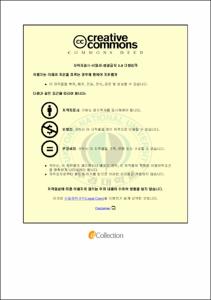마이크로웨이브 졸-겔법에 의한 Li2MnSiO4/C 전기화학적 특성
- Alternative Title
- Electrochemical performance of Li2MnSiO4/C synthesized by microwave assisted sol-gel process
- Abstract
- Abstract
Recently, The rapid proliferation of portable electronic devices in the international marketplace has led to a corresponding increase in the demand for advanced secondary batteries. The miniaturization of such devices as, for example, cellular phones, laptop computers, etc.,has induced the desire for rechargeable batteries with high specific energies.
Commercialized lithium secondary batteries use cobalt based materials as a cathode material. However, cobalt based cathode materials are not suitable for large scale batteries due to high raw materials cost and safety problem. Secondary batteries will become increasingly important for future environmentally friendly “green” societies and will be use in large scale. Thus, the extensive studies to replace the currently used cobalt based cathode materials have been done and one of the possible candidates is lithium manganes silicate (Li2MnSiO4). Li2MnSiO4 has advantages of high theoretical capacities of 333 mAh/g and excellent stability. However, it suffers from very poor cycle performance and rate performance due to intrinsically low electronic conductivity. In this study, we tried to improve the electronic conductivity by means of using microwave assisted sol-gel process and in situ carbon coating using sucrose as a precursor.
- Issued Date
- 2011
- Awarded Date
- 2011. 2
- Type
- Dissertation
- Publisher
- 부경대학교
- Affiliation
- 부경대학교 재료공학전공
- Department
- 대학원 재료공학과
- Advisor
- 정해용
- Table Of Contents
- 1. 서 론 1
2. 이론적 배경 3
2.1. 리튬이차전지 3
2.1.1. 리튬이차전지의 역사 3
2.1.2. 리튬이차전지의 원리 4
2.1.3. 리튬이차전지의 특성 11
2.2. 리튬이차전지의 구성 11
2.2.1 양극 물질 (Cathode materials) 12
2.2.2. 음극 물질 (Anode materials) 16
2.2.3. 전해액 (Electrolyte) 19
2.2.4. 분리막 (Separator) 21
3. 실험 방법 23
3.1. 합성방법 23
3.1.1. Sol-gel법 23
3.1.2. Micro-wave 24
3.2. 전기화학적 특성 24
3.2.1. 전극 제조 24
3.2.2. 전지 조립 25
3.2.3. 충방전 실험 27
3.2.4. Cyclic Voltammetry(CV) 실험 27
3.2.5. In situ XRD & 포항가속기(PAL) 29
4. 실험 결과 분석 및 고찰 32
4.1. Li2MnSiO4의 특성 32
4.1.1. 물리적 특성 32
4.1.2. 전기화학적 특성 39
4.2. Li2MnSiO4/C의 특성 46
4.2.1. 물리적 특성 46
4.2.2. 전기화학적 특성 52
4.3. Li2MnSiO4-Microwave의 특성 59
4.3.1. 물리적 특성 59
4.3.2. 전기화학적 특성 63
5. 결 론 66
참고문헌 68
- Degree
- Master
- Files in This Item:
-
-
Download
 C 전기화학적 특성.pdf
기타 데이터 / 2.95 MB / Adobe PDF
C 전기화학적 특성.pdf
기타 데이터 / 2.95 MB / Adobe PDF
-
Items in Repository are protected by copyright, with all rights reserved, unless otherwise indicated.